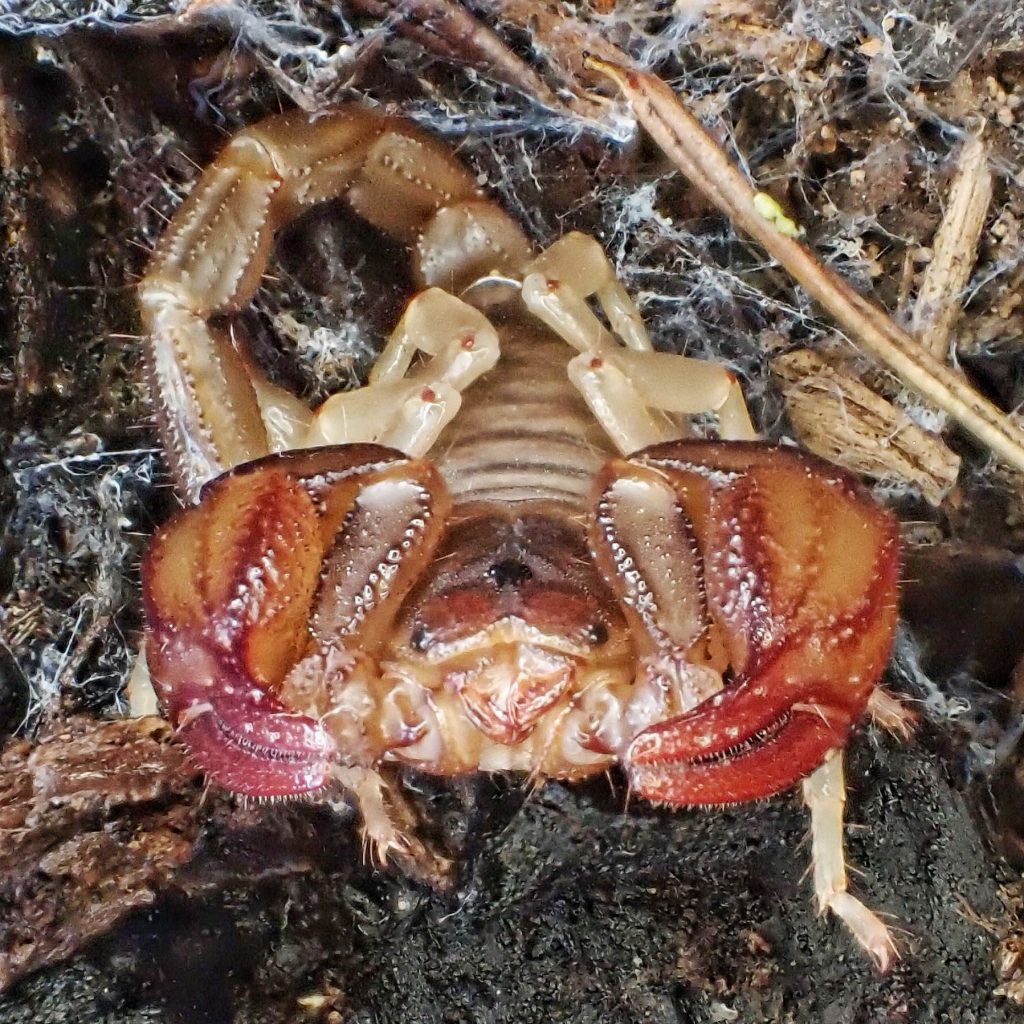
There were many moments of discovery on my trip to sw Oregon, many moments of joy and wonder, many ‘Yeehaw!’ moments. But, possibly because it was so unexpected (although it shouldn’t have been), the moment when the most thrilled adrenaline rush of the trip coursed through my veins was when Sam McNally said, in his usual low key way, ‘I found a scorpion’. I hopped up from my examination of the underside of a log, and hustled (well, as much as this old man can ‘hop up’ or ‘hustle’) over to get a look before it disappeared, although it didn’t end up moving at all, possibly due to the relatively low temperature.
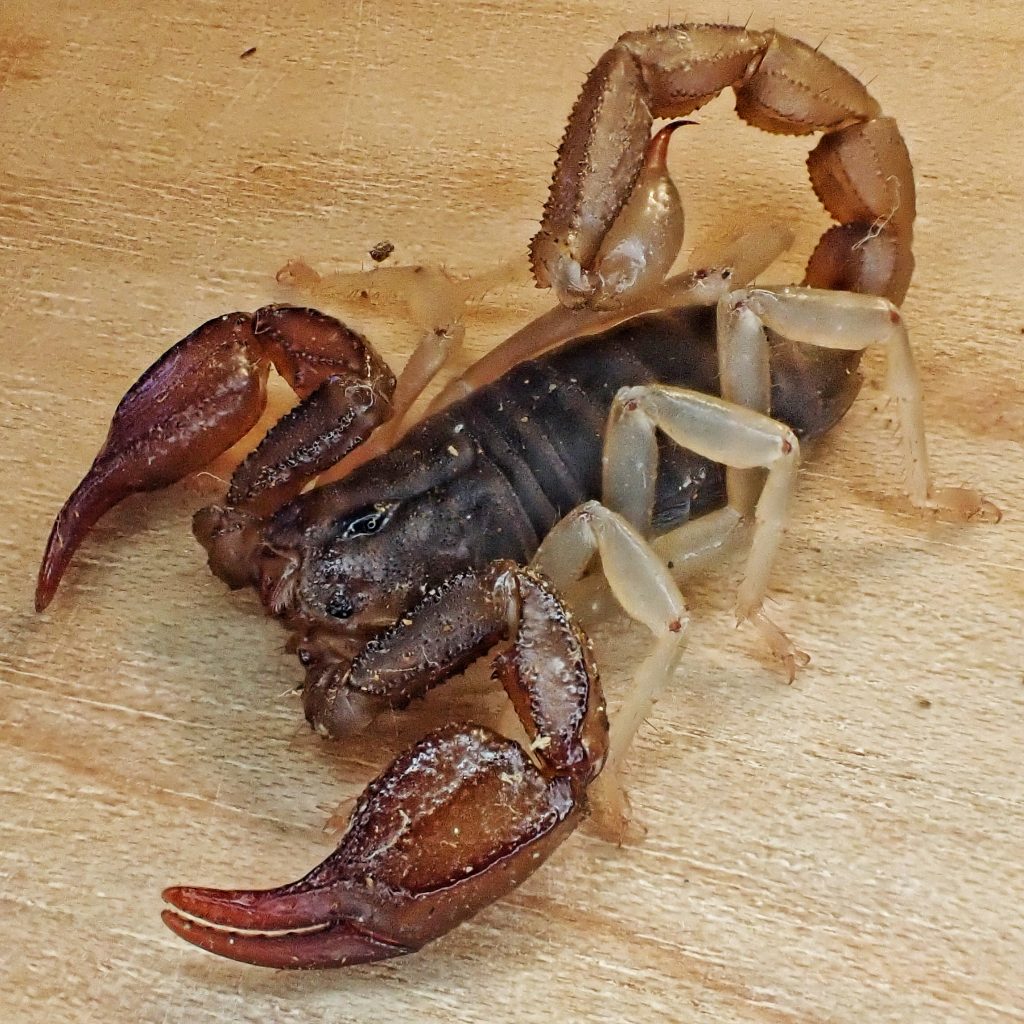
Based on the location (Applegate Ridge in Jackson County, Oregon) I was pretty sure it was Uroctonus mordax (commonly called the California forest scorpion or Oregon forest scorpion, though I prefer the term western forest scorpion, since its range is not confined to either of those two states), but scorpions are difficult to positively identify in the field, and there is always the possibility of a range extension in under surveyed groups like scorpions, so I collected it after a few photos. A few minutes later (and only a few yards away) Sam uncovered another scorpion, but since it appeared to be identical to the first one, albeit somewhat larger, I merely took several photos, grokked in the fullness of its presence, and then left it in peace after replacing the roof to its house.
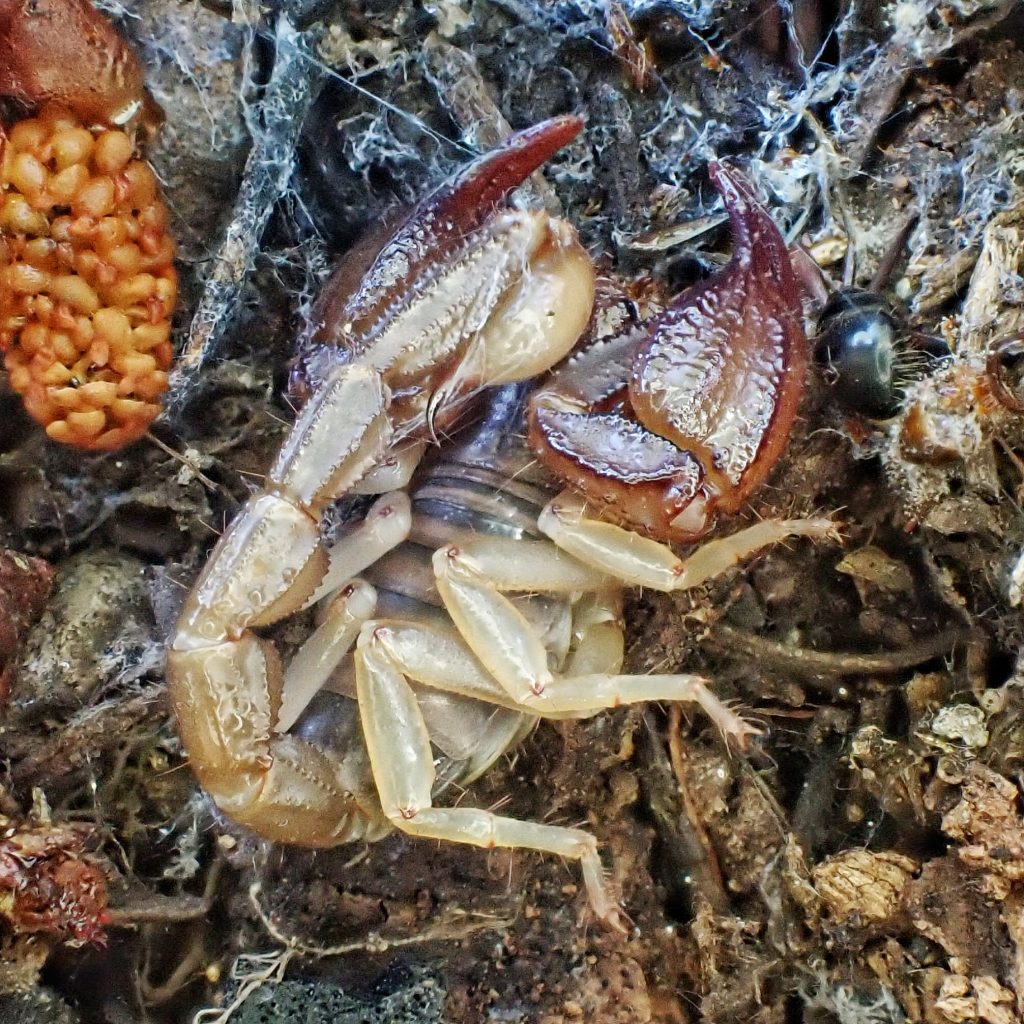
30 years ago I found a couple of these scorpions in the Columbia River Gorge, and I was shocked to find scorpions in a forest, having it in my head that scorpions only lived in deserts. But my friend Craig Sondergaard knew immediately what they were, and I have unsuccessfully been hunting for more of them ever since. Like most scorpions western forest scorpions fluoresce under UV light, and I’ve heard of them being found by nighttime hikers with UV flashlights (especially on the Dog Mtn trail on the Washington side of the Columbia River Gorge), but though I’ve tried that a few times I have not succeeded in finding one.
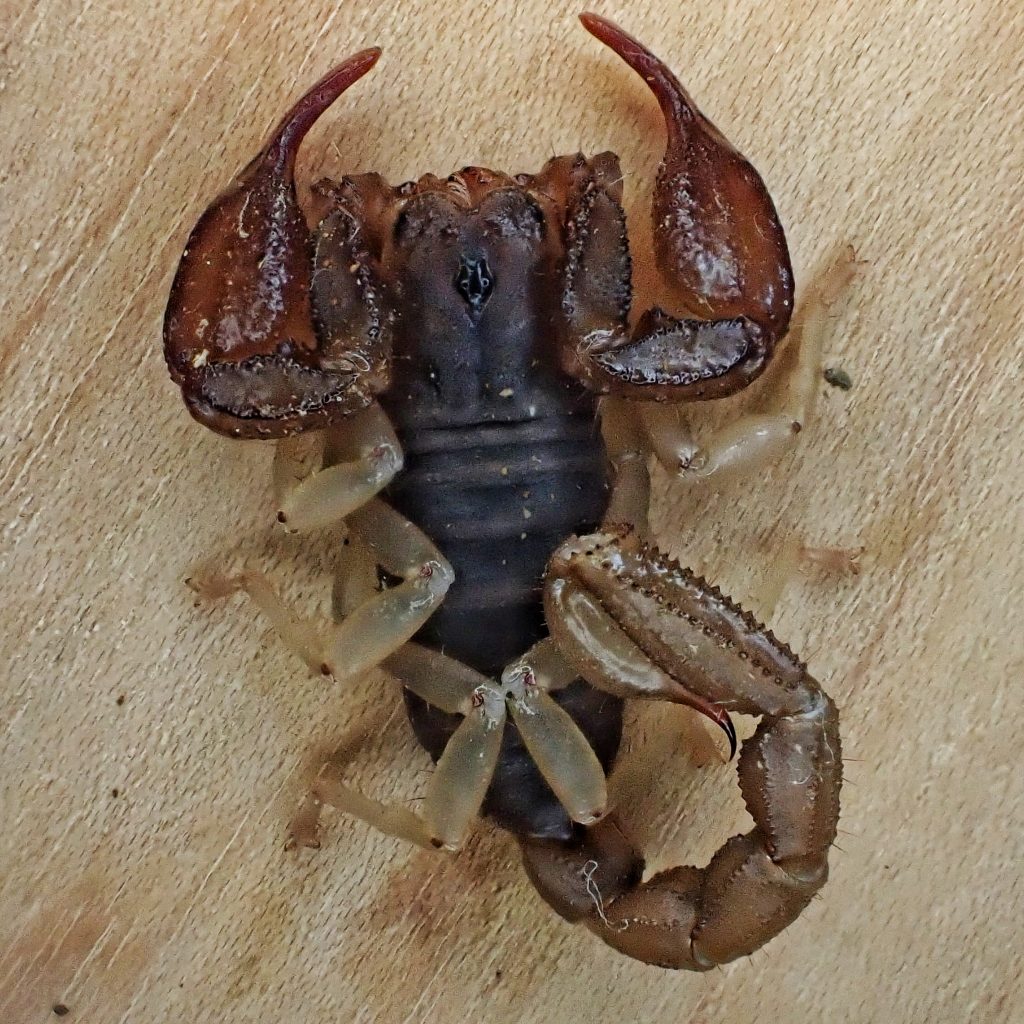
There doesn’t seem to be a lot of information out there specific to this species. In fact arachnological taxonimists can’t even decide if it belongs in the family Vaejovidae, or Chactidae, or neither. I wrote about scorpion UV fluorescence and mating rituals in my profile of Paruroctonus boreus, and that information is also valid for Uroctonus mordax. Based on their presence in much more humid areas than Paruroctonus boreus I would guess that Uroctonus mordax is more prone to desiccation, but the limits to its northern range suggest that it is also less tolerant of prolonged cold, although some of its habitats that are over 1,000’ elevation are probably snow covered for several months a year. But these are all suppositions, and I can find no information that verifies any of them.
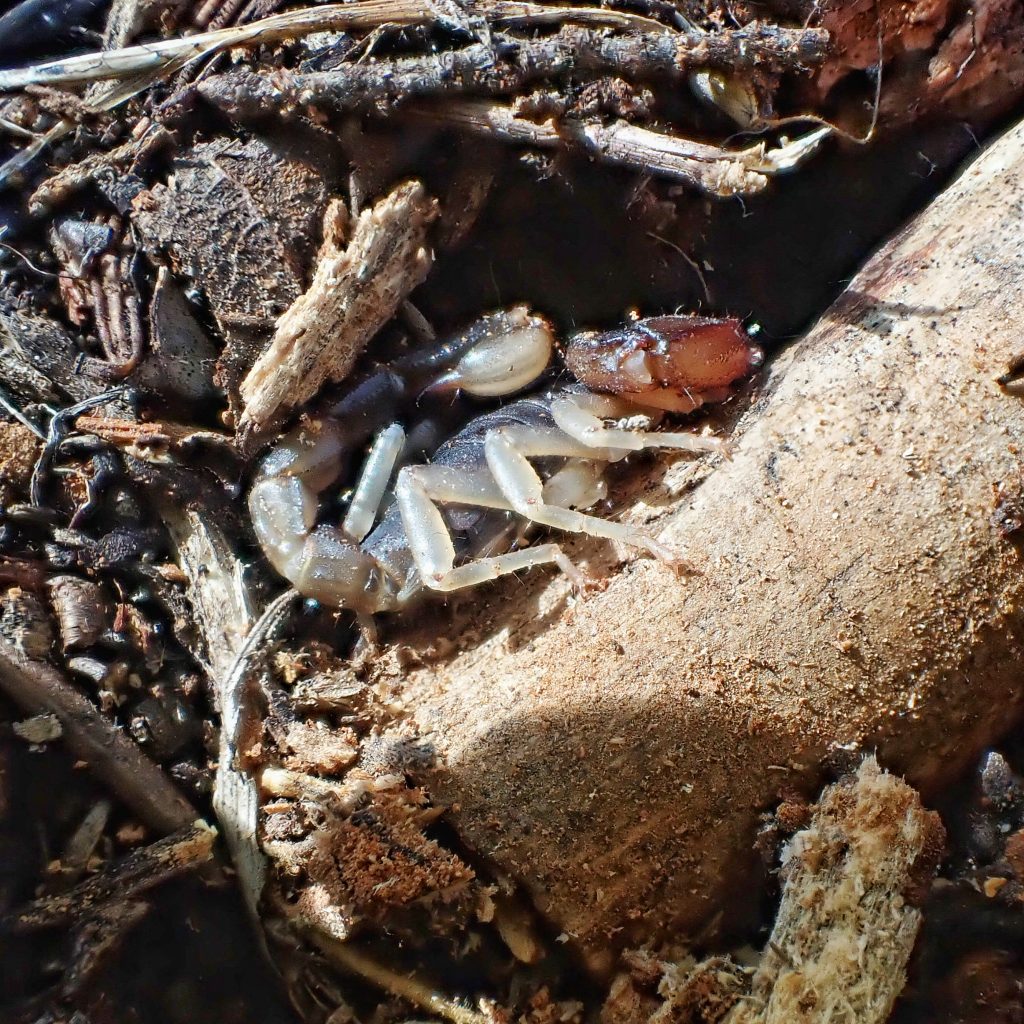
And I am trying to be okay with leaving them mysterious, because there is only so much that we can ever know about the life as experienced by any living creature, especially one that lives deep in the shadows and the night as western forest scorpions do. They seem such perfect little predators, and so prehistoric, with a basic body plan that’s been around for 400 million years. And yet, at least for the two species I’ve found, they are much more inclined to move away than to attack. Provided one is not allergic, neither Uroctonus mordax or Paruroctonus boreus have a medically significant sting, apparently somewhere on a par with a bee or yellowjacket sting, and the venom is so unproblematic that it’s chemical composition hasn’t even been studied. So, while it is probably not wise to let your baby crawl around in the brush in the dark where western forest scorpions are known to prowl (or even where they don’t, fer’gosh’sakes!), the rest of us can just enjoy without fear the functional and aesthetic beauty of these wonderful creatures.
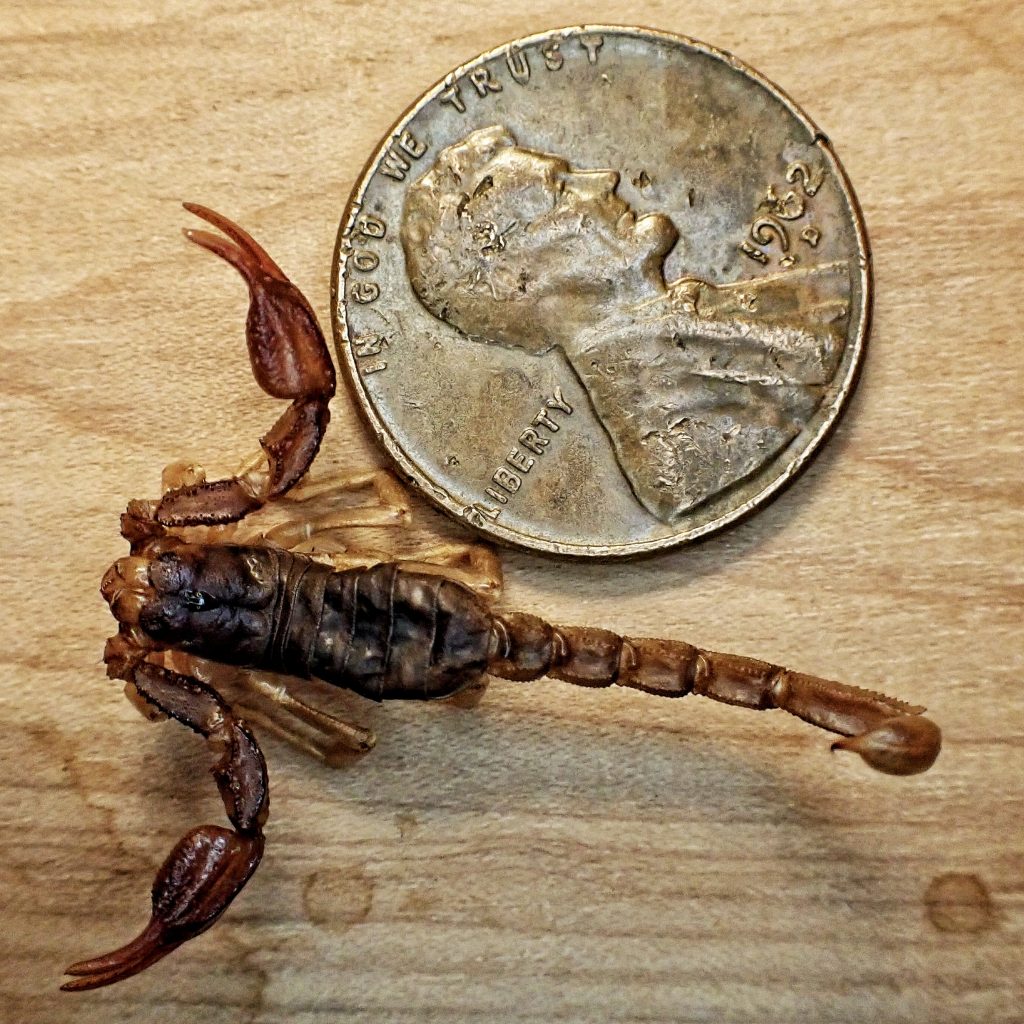
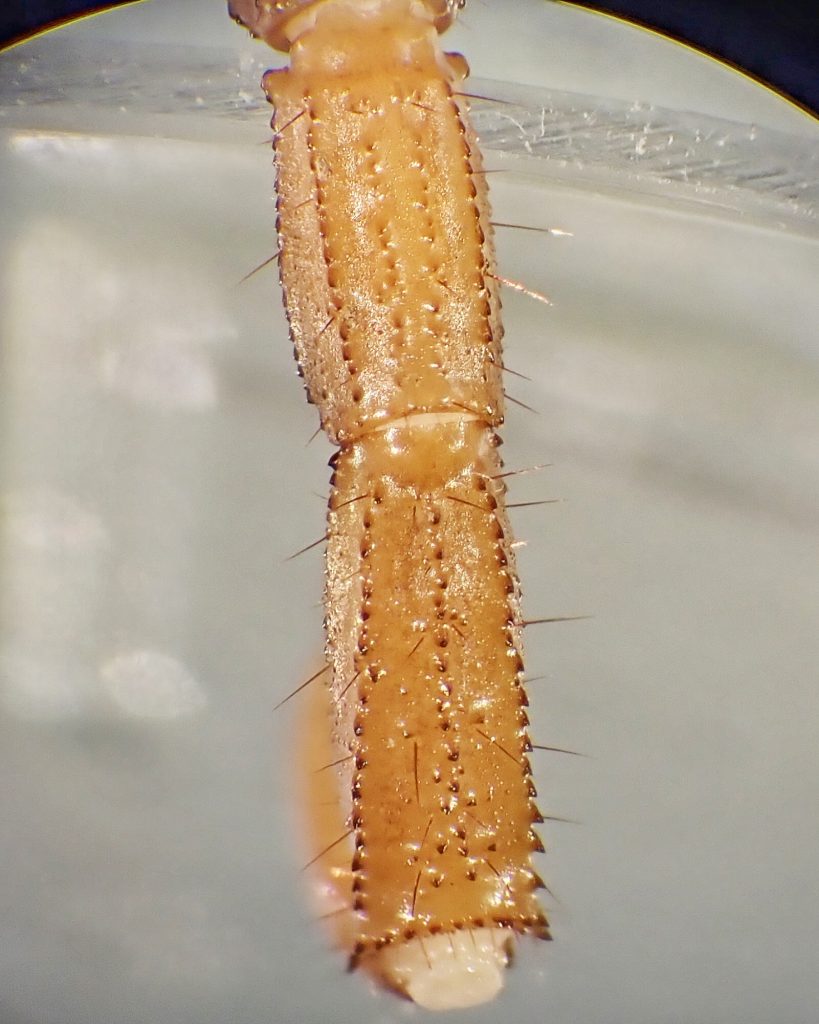
Description-Small to medium sized (up to 2” long, roughly half body [carapace and mesosoma] and half tail [metasoma and venom bulb]), mostly dark scorpion with (usually) lighter colored legs; front of carapace is indented; y-shaped, dotted keel on the bottom (although with the stinger ‘cocked’ it becomes the top) of the last segment (segment 5) before the venomous bulb (telson); 3 lateral eyes on each side of carapace; middle lamellae of pectines numbering 6.
Similar species–Uroctonus glimmei lacks forked keel on segment 5, and the tail is noticeably longer than the body; Paruroctonus sp. have bulging or flat front of carapace; Hadrurus obscurus is much larger and has more hair; Anuroctonus sp. have 4 lateral eyes on each side of carapace.
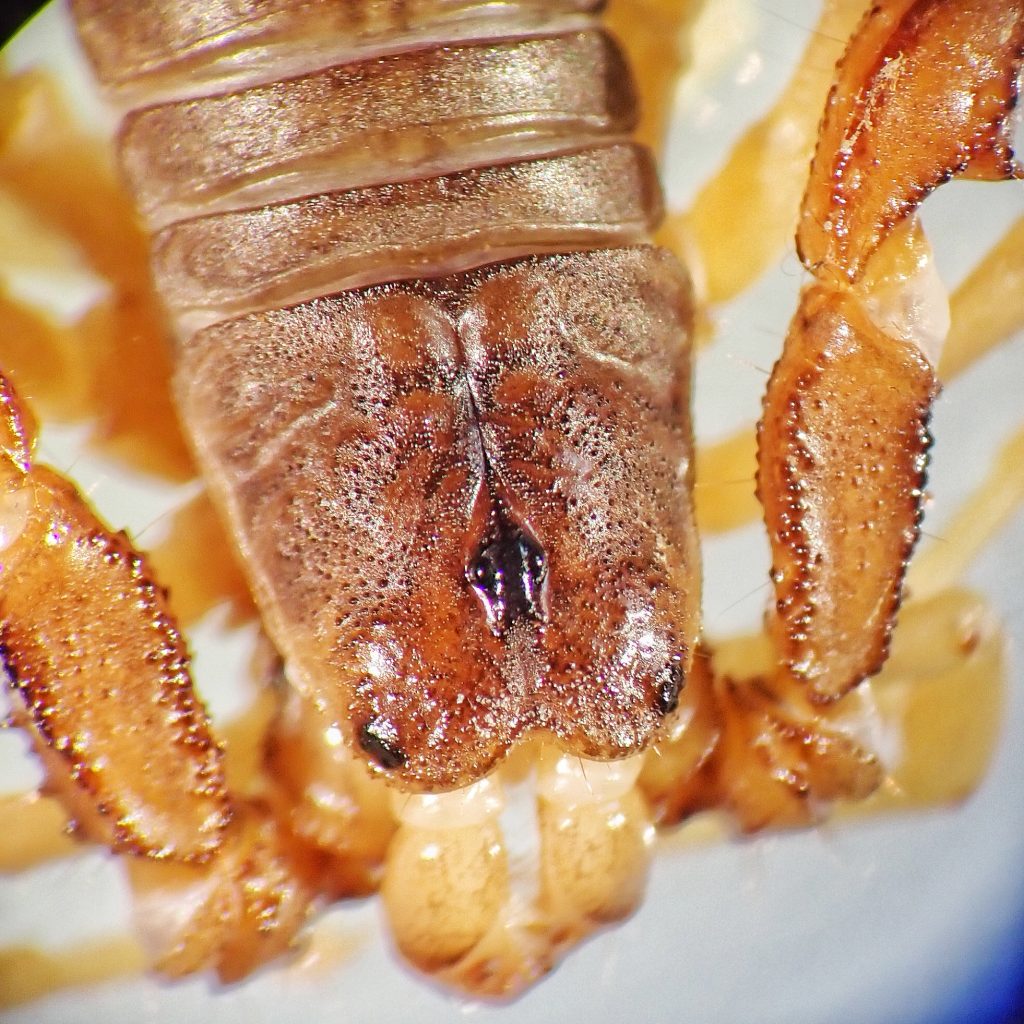
Habitat– Moist to mesic forests and woodlands, up to 5,000’ elevation in nw California; almost always under cover in daylight hours, and seems to prefer wood, rather than rock, for its cover.
Range-West Coast of US; found in the middle and western Columbia River Gorge and north to the south side of Mt. St. Helens (the ones near Mt. St. Helens appear to be the northern extent of this species known range), along the west slope of the Cascades in Oregon up to about 3,000’ elevation, throughout the Siskiyou and Klamath Mtns, throughout sw Oregon/nw California and along the coast from Coos Bay, Oregon to Santa Cruz, California; also found in the western foothills of the Sierras.
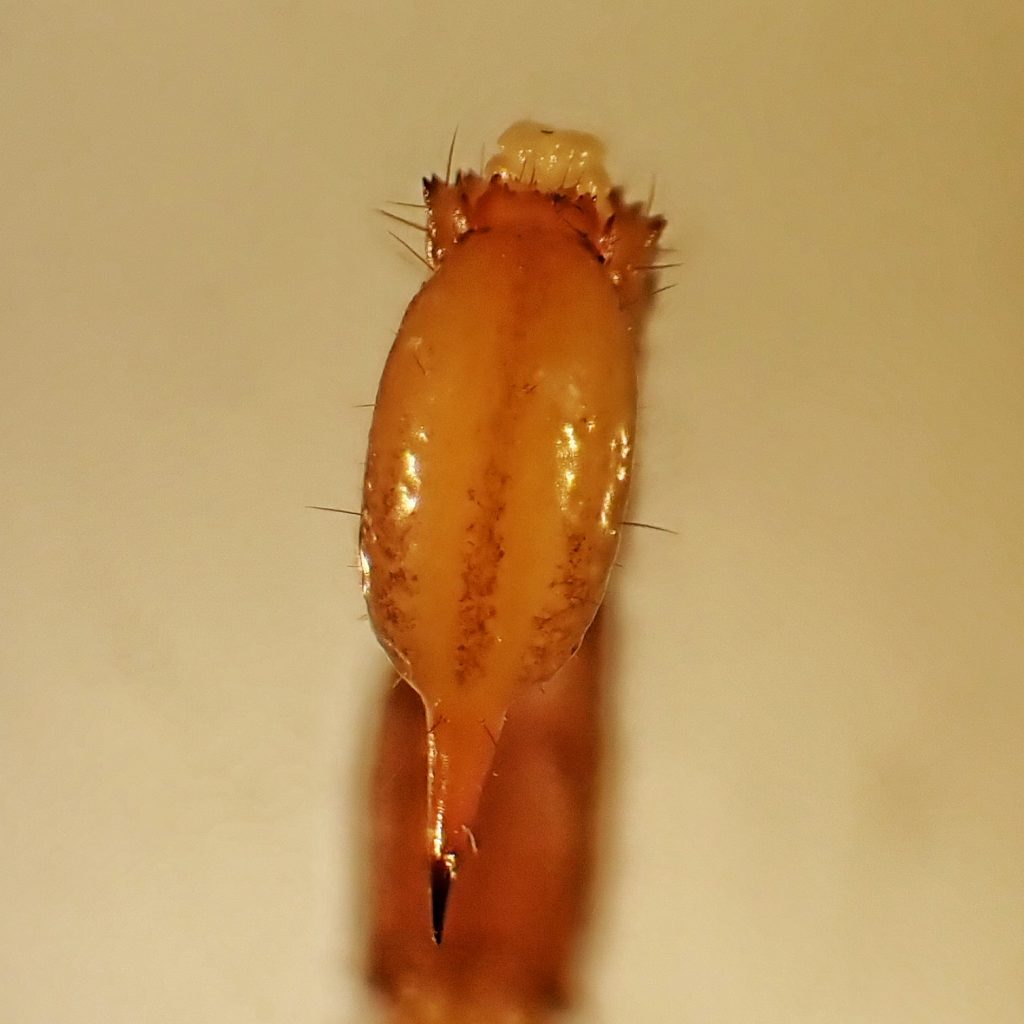
Eats-Young ones (1st, 2nd, 3rd instar) tend to choose soft bodied prey like grubs and termites; older immatures and adults feed on spiders, grasshoppers, crickets, beetles, stinkbugs, and most anything else they can subdue.
Eaten by-Snakes, lizards, insectivorous mammals, Jerusalem crickets (genus Ammopelmatus), possibly owls; ETA- my friend Kristi DuBois tipped me off that they may be consumed by pallid bats (Antrozous pallidus), who occupy some of the same range, and are known to prey on Arizona bark scorpions.
Adults active-Year around, but much less active during coldest months.
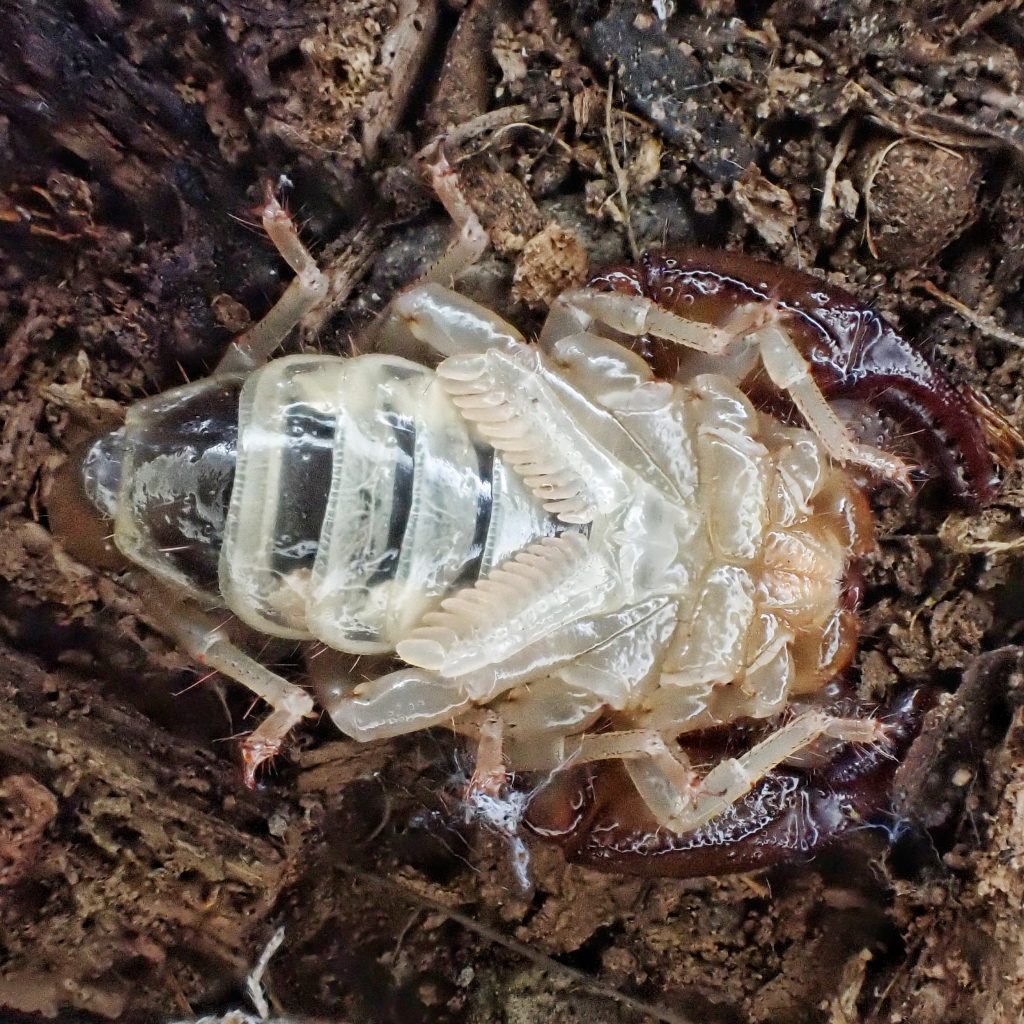
Life cycle-Probably mate in late spring/early summer; females give live birth (in mid to late summer) to 20-40 young, who are encased in a membrane that the mother helps them tear through before they climb onto her back, where they ride until their first moult; 7 instars and 2-3 years to sexual maturity
Etymology of names–Uroctonus is from the Greek words for ‘tail killer’, which would refer to the venom injecting telson. The specific epithet mordax seems to be from the Latin words for ‘biting/corrosive/pungent, and Dupre (2016) indicates that it refers to stinging with the telson.
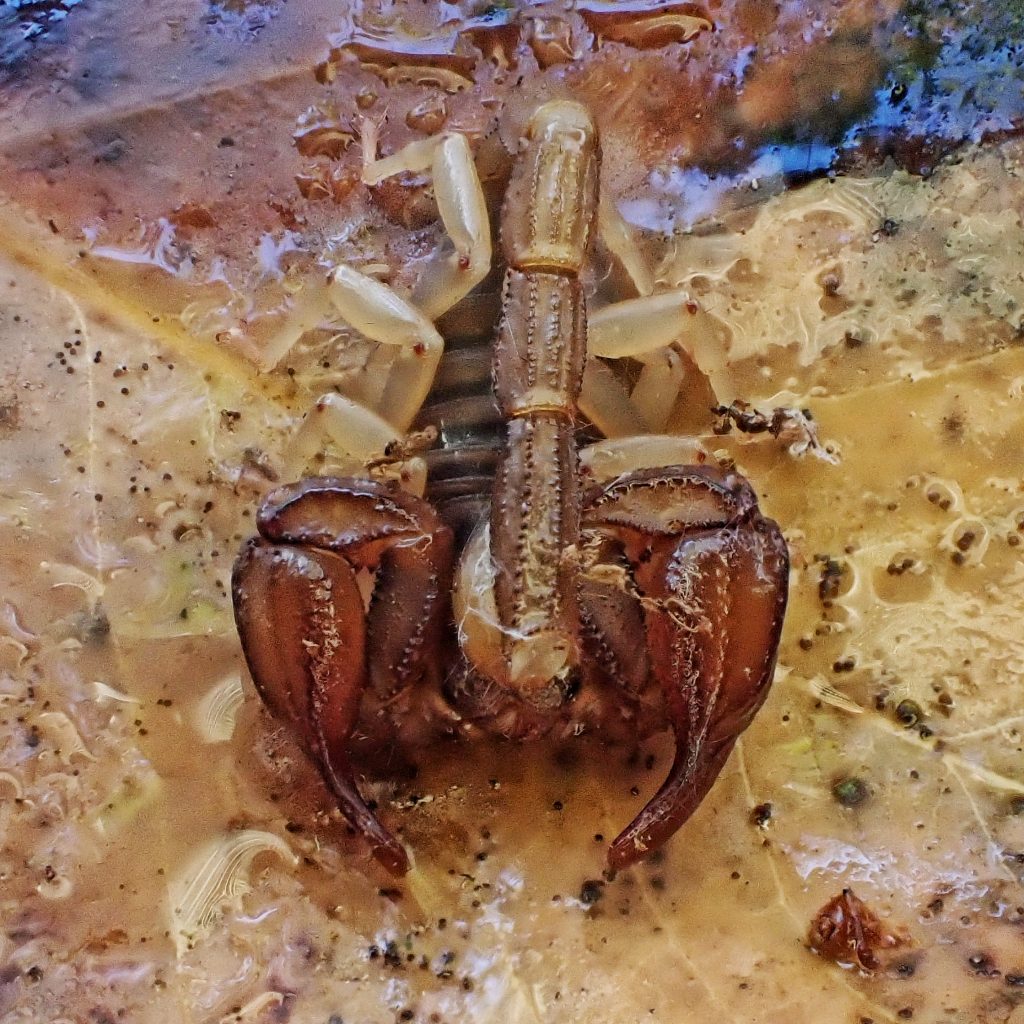
https://britishspiders.org.uk/system/files/library/030906.pdf
Species Uroctonus mordax – California Forest Scorpion – BugGuide.Net
https://www.angelfire.com/tx4/scorpiones/states.html
Checklist to the Non-<b><i>Vaejovis</i></b> Taxa of the Scorpion Family Vaejovidae
Checklist to the American Scorpion Genera Paruroctonus and Smeringurus
Uroctonus mordax – Trout’s Notes
Scorpions pectines – Idiosyncratic chemo- and mechanosensory organs – PubMed
https://www.ntnu.no/ub/scorpion-files/dupre_2016_dictionary.pdf
Paruroctonus boreus (Northern Scorpion) – 10,000 Things of the Pacific Northwest
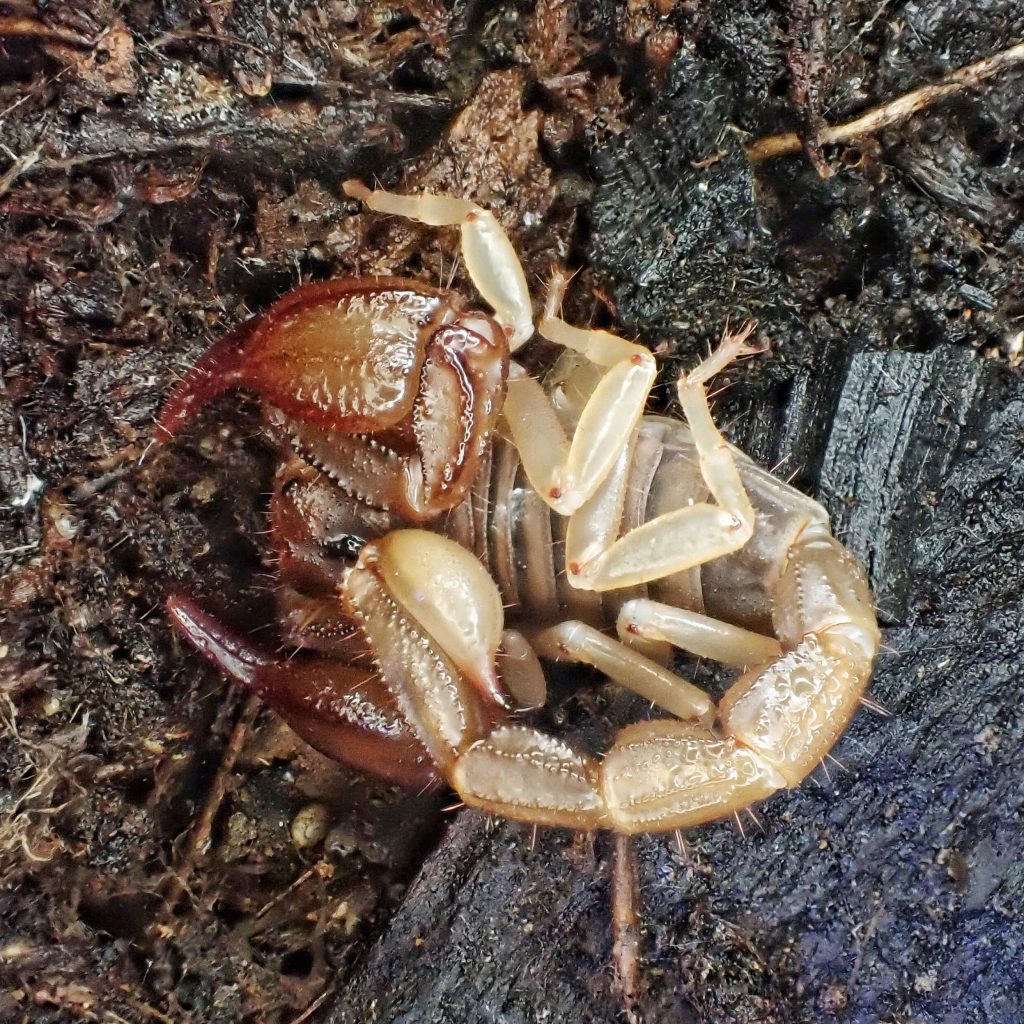
Oh, what a COOL find! This one’s on the bucket list; thanks for sharing your good fortune.
I haven’t given up trying to find one with my UV flashlight. Scorpions are such interesting creatures! Thanks for your appreciation, Rebecca!
I did not know there were scorpions here! I always think of scorpions in desert environments!
Scorpions always remind me of a beautiful poem someone gave me many years ago (hope its ok to share here, if not just erase)
Iskandariya | Brigit Pegeen Kelly
It was not a scorpion I asked for, I asked for a fish, but maybe God misheard my request, maybe God thought I said not “some sort of fish,” but a “scorpion fish,” a request he would surely have granted, being a goodly God, but then he forgot the “fish” attached to the “scorpion” (because God, too, forgets, everything forgets); so instead of an edible fish, any small fish, sweet or sour, or even the grotesque buffoonery of the striped scorpion fish, crowned with spines and followed by many tails, a veritable sideshow of a fish; instead of these, I was given an insect, a peculiar prehistoric creature, part lobster, part spider, part bell-ringer, part son of a fallen star, something like a disfigured armored dog, not a thing you can eat, or even take on a meaningful walk, so ugly is it, so stiffly does it step, as if on ice, freezing again and again in mid-air like a listening ear, and then scuttling backwards or leaping madly forward, its deadly tail doing a St. Vitus jig. God gave me a scorpion, a venomous creature, to be sure, a bug with the bite of Cleopatra’s asp, but not, as I soon found out, despite the dark gossip, a lover of violence or a hater of men. In truth, it is shy, the scorpion, a creature with eight eyes and almost no sight, who shuns the daylight, and is driven mad by fire, who favors the lonely spot, and feeds on nothing much, and only throws out its poison barb when backed against a wall — a thing like me, but not the thing I asked for, a thing, by accident or design, I am now attached to. And so I draw the curtains, and so I lay out strange dishes, and so I step softly, and so I do not speak, and only twice, in many years, have I been stung, both times because, unthinking, I let in the terrible light. And sometimes now, when I watch the scorpion sleep, I see how fine he is, how rare, this creature called Lung Book or Mortal Book because of his strange organs of breath. His lungs are holes in his body, which open and close. And inside the holes are stiffened membranes, arranged like the pages of a book — imagine that! And when the holes open, the pages rise up and unfold, and the blood that circles through them touches the air, and by this bath of air the blood is made pure . . . He is a house of books, my shy scorpion, carrying in his belly all the perishable manuscripts — a little mirror of the library at Alexandria, which burned.
That’s wonderful, Amanda! Thank you for sharing that!
I love that poem.
Fascinating! Maybe someday i will see one.
I hope so, Elaine!
If this is the same species I find often, they are quite common near Big Basin State Park. I usually find one or two once a month working outside. Gotta be careful rolling wood over without gloves on. Though they seem more inclined to just ignore you or high tail it.
Very cool! Thanks for sharing that with us, James!
I can confirm the Santa Cruz mountains as a good spot to find these guys- I have 10 acres in the Zayante area and I just bumped into two of them while cleaning up after a wind storm. I’ve got some pics but don’t see a way to post here.
Very cool, Randall! Thanks for sharing that with us!